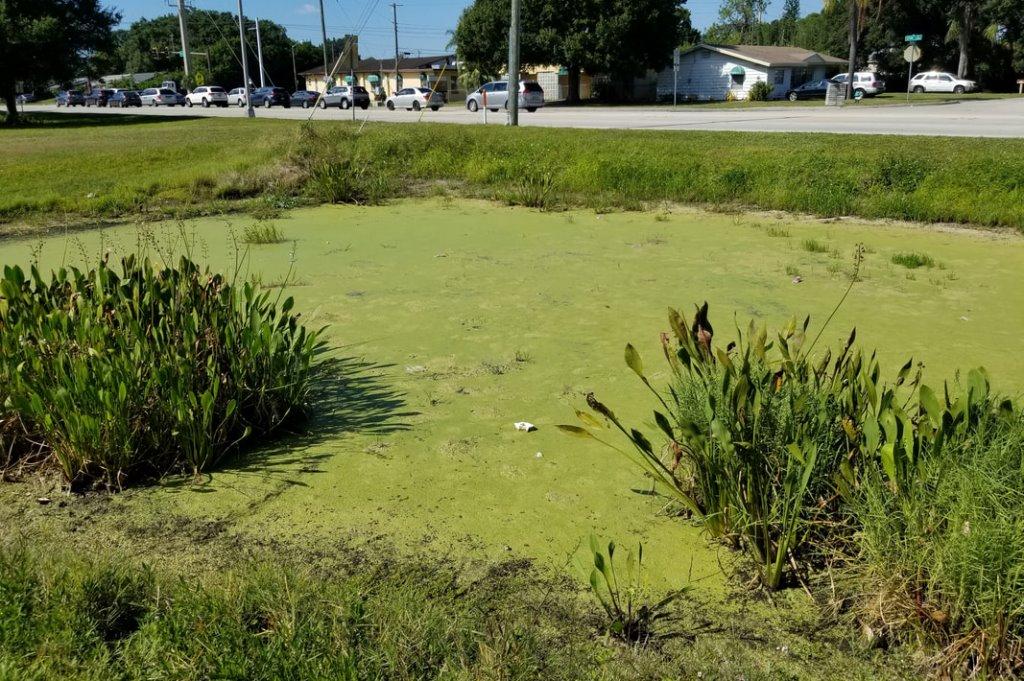
Water Quality Efforts Starting to Make Waves in Local Neighborhoods
In many local neighborhoods, stormwater ponds only become a concern when they begin looking unattractive. Homeowners associations tend to spring into action when they see algae covering the surface or the water starts to look dirty.

But the fact that those ponds are no longer pretty isn’t the problem. It’s actually a symptom of the problem. “It’s like a runny nose with a cold,” says Sandy Gilbert, chairman and CEO of START (Solutions to Avoid Red Tide).
A proactive approach to managing ponds works better—for the pond and for the environment. That’s why Gulf Coast Community Foundation made a $10,000 grant through its Environment initiative to help START launch its Pond Enhancement Program. This program provides grants to Sarasota County neighborhoods that are upgrading their stormwater ponds to purchase and install native aquatic plants.
The true purpose of the ponds you see in so many neighborhood in our region is to collect stormwater. When their banks begin to erode, nutrient-rich dirt starts entering the pond. This not only helps fuel algae growth, but it also raises the bottom of the pond, reducing the amount of stormwater it can hold.
Dollars and Sense
START, along with partners like Sarasota County’s Neighborhood Environmental Stewardship Team (NEST) and the local UF/IFAS Extension office, works to educate neighborhoods about the best way to manage their stormwater ponds. This includes steps like establishing a no-mow zone around the perimeter of the pond and planting native plant stock such as bullrush, yellow canna, and swamp hibiscus at the water’s edge to help absorb nutrients and prevent erosion of the ponds’ banks.
Gilbert expects that START will be able to support 12 neighborhoods undertaking pond improvement projects through the Gulf Coast grant. Convincing neighborhoods to take these kinds of forward-thinking steps often requires an appeal to their pocketbooks.
“We show them that they will save money by properly managing their ponds, and that gets everybody’s attention,” says Gilbert. “Erosion eventually will wear down the ponds’ banks. Unless neighborhoods do the things we suggest, they’re going to have a major repair bill for those ponds before too long.”
It can cost between $100 and $200 a linear foot to rebuild the banks of a stormwater pond, money that can quickly add up depending on the size and number of ponds that need work. Plus, housing values tend to be higher for homes situated along healthy, clean stormwater ponds.
The Meadows, Rivendell, and Chestnut Creek are some of the local neighborhoods that have already taken advantage of START’s Pond Enhancement Program. START has also supported a pond enhancement project at the Venice Area Audubon Rookery, an important local bird nesting site visited by some 20,000 people a year.
Straight from the Playbook
START’s pond program—and Gulf Coast’s support for it—came about through Gilbert’s involvement in the foundation’s Water Quality Playbook.
This first-of-its-kind guide features action steps that can be taken by a range of community stakeholders to improve the environmental water quality in our region. Gilbert—who represented START and other advocacy groups on the Playbook project’s steering committee—began focusing on the recommendations for managing neighborhood stormwater ponds. “It all came out of the Playbook,” he says.
What’s exciting about START’s effort is the literal ripple effect it’s having. Neighborhood stormwater ponds eventually empty into other waterways, and the water in these creeks and canals ends up flowing into Sarasota Bay. And that flow brings more than just water: Gilbert says there are two times the red-tide-feeding nutrients in Sarasota Bay today than in 2000.
“If our ponds are dirty, then it ends up in Sarasota Bay,” he says. “It’s much better and more efficient to clean the water before it goes into the bay than to try to clean the bay.”
By discussing the issue at a neighborhood level, START helps people see the wider impact that pond improvement efforts can have. “They begin to get it and even have an increased sense of pride that they’re fighting this red tide thing,” he says. “In the past, everyone would look at the government or Mote or Florida Fish and Wildlife like it was their problem to solve red tide. By dealing with people on this basis, they realize that we’re all contributing to red tide.”
And this is only the beginning. Gulf Coast’s start-up grant helped show the possibilities of START’s Pond Enhancement Program. Now Charles & Margery Barancik Foundation is investing in START and its partners to drive neighborhood pond improvements on a much larger scale.
Making Waves
A three-year, $250,000 grant from Barancik Foundation will allow START to create the Healthy Pond Collaborative. Through that partnership, START, NEST, the UF/IFAS Extension, and the Science and Environmental Council will help even more neighborhoods upgrade their ponds. The collaboration will also create an online pond management guide—another Playbook activity—that can be shared with communities all over Florida through the UF/IFAS Extension.
“It’s an outgrowth of Gulf Coast’s Water Quality Playbook and the original Gulf Coast grant that will be multiplied many, many times,” says Gilbert. “It really couldn’t be more exciting.”
“This is just the kind of thing we hoped would happen when we created the Playbook,” says Jon Thaxton, senior vice president for community investment at Gulf Coast. “By bringing different groups together, the Playbook helps create cost-sharing solutions to the issues that affect our water quality. It will take work from many different sectors to keep our waterways clean and healthy.”
“This is one of the most significant things I’ve worked on at START, and I’ve been doing this for 20 years,” says Gilbert. “I love giving lectures, but people usually leave the room and nothing happens. Now they’re doing something. We’ve made the people part of the solution, and that’s the key.”



